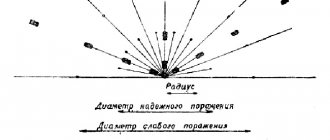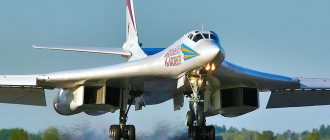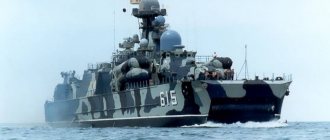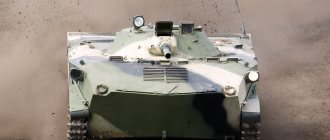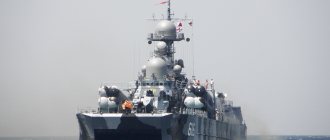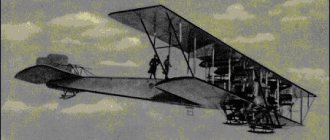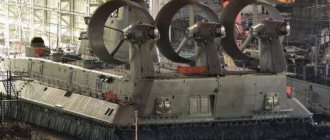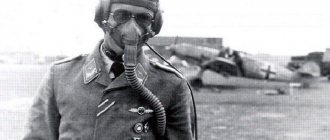ZRK 2K12 KUB. Damage range. Rocket speed. Principle of operation
Designed for air defense of troops against aircraft and projectile aircraft flying at low and medium altitudes at both subsonic and supersonic speeds. The 2K12 “KUB” air defense system and its modifications (2K12M1, 2K12M2 2K12MZ) were mass-produced during the seventies and are still in service with the armies of Russia and many foreign countries. Currently, in order to more effectively combat modern and promising air attack weapons (aerodynamic and missile), the 2K12 complex and its modifications are being fundamentally modernized, they are given new qualities that significantly improve tactical and technical characteristics.
Radar P-40A
It is a radar rangefinder, which is listed in the technical documentation as “Armor” 1RL128. This air defense system is aimed at performing the following tasks:
- identification of an air target;
- antennas are brought to the target automatically and calculate its altitude;
- determines azimuth and slant range;
- the built-in “friend or foe” program determines the state ownership of the object.
Radar P-40A
The complex is equipped with radio engineering units and air defense formations, anti-aircraft artillery and missile units. The “Armor” design is antenna-feeder. The location of the equipment, components and ground-based radar interrogator is the 426U self-propelled tracked chassis. There is also space for two gas turbine units that provide power to the system.
ZRK 2K12 KUB - video
The KUB air defense system is being upgraded:
— reliability by transferring blocks and assemblies to modern Russian-made element base, as well as those proposed by a foreign customer;
— the possibility of centralized control of the air defense system by introducing new centralized control means into its composition, as well as interfacing the air defense system with the centralized control means in service with the foreign customer.
In 1996-1998, the Kvadrat air defense system was modernized. The following were introduced into the air defense system:
— digital processing of moving target selection signals; — new target illumination transmitter; — target class recognition system; — radiation regulation mode: — target tracking mode using a television-optical sight.
In 1999-2000, in accordance with the agreed technical specifications, the modernization of the Kvadrat air defense system and its modifications supplied for export will be carried out in the indicated areas. The purpose of modernization is to create an air defense system with improved technical and operational characteristics - 2K12M5 (Kvadrat-M air defense system). The combat, technical and fire control equipment of the air defense systems are subject to modernization.
The combat assets of the modernized Kvadrat-M air defense system are expected to include:
- modernized self-propelled reconnaissance and guidance unit - SURN 1S91M2E; - four modernized self-propelled launchers - SPU 2P25M2E; - one self-propelled firing system - SOU 9A310M1 from the 9K37M1 Buk-M1 air defense system, modified for docking with SURN and SPU and providing operation of either three ZM9MZ missile defense systems or four Buk-M1-2 air defense missile systems; — Buk-M1-2 air defense missiles (up to four pieces), placed on the self-propelled gun; — a mobile passive station for automatic detection of radio emission sources “Orion” (85B6), which allows the detection of emitting target objects. "Orion" provides an automatic panoramic view of the space, signal processing using the central digital design, transmission of information to the SURN in the form of target designation (TS) via AZ and UM in analog form through the control center or directly. “Orion” is mounted on a mobile base (UAZ vehicle) and is operated by one person. The power source is autonomous. The number of purposes for which information can be provided to the user is 30-50. The self-propelled gun can be attached to one SPU 2P25M2E with the ability to provide fire control from the self-propelled gun or one PZU 9A39 with eight Buk-M1-2 air defense missiles.
Self-propelled reconnaissance and guidance unit 1S91
The type and composition of combat equipment of the Kvadrat-M air defense system can be determined by the foreign customer. The modernized fire control systems of the Kvadrat-M air defense system are expected to include:
— a modernized set of the K-1 “Crab” apparatus; - combat control point (CCU) - product 9S470M1 (KP) from the Buk-M1 complex; — radar information processing post (PORI) 9С467-2ВМ2.
It is planned to replace the long-range detection radars of the P-40, P-18(12) P-19(15) type as part of the “Crab” with a modern target detection station (SOTs) of the 9S18 type with a phased array antenna, interfaced with the PBU 9S470M1 and further with the SOU 9A310M1 via a telecode communication system.
The type and composition of the above controls is also determined by the foreign customer. In addition to the existing ones, the technical equipment of the Kvadrat-M1 air defense system includes:
— transport vehicle 9T243 for transporting missiles; — automated control and testing mobile station 9V95M1 for missile control; — maintenance workshop 9V881M1.
As a result of the modernization of the Kvadrat air defense system and its modifications, it is expected to obtain the following combat and technical characteristics of the Kvadrat-M complex:
- increase in combat performance by 1.8-2 times: - increase in noise immunity and secrecy of operation; - increase in the affected area in height by 1.5-1.8 times, in range by 1.3-1.7 times; — increasing the number of simultaneously fired targets to two; — significant expansion of the fleet of targets to be hit.
The increase in combat performance is ensured by the parallel operation of two firing channels (SURN 1S91M2E - SPU 2P25M2E and SOU 9A310M1 -SPU). An increase in the noise immunity and secrecy of the Kvadrat-M air defense system is ensured by the high noise immunity of the SOU 9A310M1 and the onboard equipment of the Buk-M1 air defense missile system, due to the introduction of a 12-liter target illumination transmitter and digital selection of moving targets (TSDSTs) into the SURN and application of Orion stations.
The increase in the affected area of the Kvadrat-M air defense system is ensured by the independent operation of the SOU 9A310M1 channel in autonomous mode up to:
— in height from 15 m to 22000 m for the Buk-M1-2 air defense missile system; — at a range from 3 km to 40 km for the 9M317 missile, Vu = 830 m/s and Hc = 10000 m; - at a range from 3 km to 22 km Nts = 50-100 m for Buk-M1-2 air defense missiles.
The upgraded Kub-M air defense system can ensure the destruction of tactical and strategic aircraft, tactical ballistic missiles with a launch range of 50-150 km (Buk-M1-2 air defense missile), cruise aircraft missiles such as ALKM, Maverick and Kharm ", UAB of the "Wallay" type, helicopters and UAVs, as well as surface targets such as boats and frigates (with Buk-M1-2 air defense missiles) and ground taxiway targets.
The probability of hitting the Kub-M air defense system when firing one missile from the Buk-M1-2 air defense system for various types of targets will be 0.7-0.95. The probability of defeat does not deteriorate by more than 15-20 percent when jamming missile guidance systems.
Armament and combat use
The “Cube” air defense system (export name “Kvadrat”) was included in the armies of the Warsaw Pact member countries and was supplied to many countries in the Middle East, Africa and Asia. He took part in local military conflicts.
It was significantly superior to its analogue, significantly constrained the capabilities of the Air Force, and subsequently its effectiveness was significantly reduced, and modernizations were carried out.
It is exported to more than forty countries around the world.
The control battery of the Kub anti-aircraft missile system included:
- KBU (combat control cabin);
- mobile radio altimeter PRV-16 “Reliability”, radar stations P-44 “Bronya”, P-18 “Malachite”, P-15 “Tropa”. The radar complex provides rapid detection of enemy air targets at a distance of up to 200 km. The KBU transmitted target designation to SURN.
Combat use of the Kub air defense system
- The first combat use of the “Cube” complex (more precisely, its export version “Square”) was the Yom Kippur War of 1973. The air defense system was used by Syrian troops. According to the data, 64 Israeli aircraft were shot down.
- Used by Syrian troops in the Israeli-Syrian border conflict. According to Russian sources, after eight missile launches, six aircraft were shot down.
- UNEF peacekeeping operation - Syrian anti-aircraft missile systems "Cube" (together with the S-75 air defense system) in the summer of 1974 took part in the destruction of a UN plane (it was carrying out a peacekeeping mission), after a flight violation in the designated corridor. Syrian troops shot down the intruder, killing 9 crew members (these were Canadian peacekeepers). The plane's debris fell near the village of Ad Dimas.
- They were used by Iraq at the beginning of hostilities during the Iran-Iraq War in 1980. As a result of the use of the Kvadrat 2K12E complexes, it was possible to shoot down 21 Iranian aircraft.
- In 1982 - the Lebanese War.
- War of Independence of Western Sahara between Morocco and Mauritania in the period 1973-1991 - used by the Polisario Front. SAMs shot down aircraft such as the Mirage F1 and F-5 Tiger II.
- Operation Eldorado Canyon 1986 - used by the Libyans to repel attacks by the Americans.
- Between 1986 and 1987 in the Chadian-Libyan conflict.
- South African Air Force raids - used by Angola against South African aircraft.
- Operation Deliberated force - used by the Bosnian Serbs. Then the SAM shot down a General Dynamics F-16 Fighting Falcon fighter plane.
- In 1999, they were used by Yugoslavia in the war with NATO. According to Russian sources, then several NATO aircraft were shot down with the help of air defense systems.
- During the civil war in Syria - then the Syrian air defense used the Kvadrat, Buk and other missile launchers to counter a missile attack by Britain, the USA and France in 2022. According to data from the Russian Ministry of Defense, a total of 103 cruise missiles were used, of which 71 were intercepted by Syrian air defense systems. 21 missiles were fired from the Kvadrat missile system, which hit 11 targets. According to the US Department of Defense, none of the missiles were hit, and most of the launches were carried out after the cruise missiles hit their targets.
Modifications of the Cube air defense system
2K12E "Square"
Export modification of the 2K12 “Cube” complex. Created in 1971. The main differences from the basic version are a modified system for recognizing the nationality of targets, a modified level of noise immunity and the ability to work in tropical conditions.
2K12M "Kub-M"
After the 2K12 air defense system was adopted, work began on its modernization. In 1968, the 2K12M Kub-M complex was developed. The modernized complex had the ability to hit targets maneuvering with overloads of up to 5-6 g. The lower limit of destruction was reduced from 100 to 50 meters, and the destruction range was increased by 20% thanks to improvements in the emitter.
2K12M1 "Kub-M1"
In January 1973, the modernized 2K12M1 “Kub-M1” complex was put into service. As a result of the modifications, the boundaries of the target engagement zone were expanded, the protection of the homing head from interference was improved, the operating time was reduced by approximately 5 seconds, the reliability of all means of the complex was improved, and intermittent operation of the SURN 1S91 radar was provided to counter anti-radar missiles of the AGM-45 Shrike type.
2K12M3 "Kub-M3"
In 1974-1975 further modernization of the 2K12 complex was carried out. At the end of 1976, the 2K12M3 “Kub-M3” air defense system entered service. Compared to previous versions, the 2K12M3 had expanded boundaries of the affected area, it became possible to fire “in pursuit” at targets at speeds of up to 300 m/s, the average flight speed of the missile defense system was increased to 700 m/s, and it became possible to destroy aircraft maneuvering with overloads of up to 8 g , the noise immunity of the homing head has been improved, the near boundary of the affected area has been reduced, and the probability of hitting targets has been increased by 10-15%.
2K12M3S "Kub-M3S"
In the 1970s, active developments were carried out in the field of electronic warfare. Soviet developments effectively countered foreign air defense systems such as the MIM-23 Hawk. In order to reduce the susceptibility of the 2K12 to such weapons of a potential enemy, the 2K12M3S modification was developed. The new modification was protected against electronic warfare systems of the Smalta type. In 1979, the 2K12M3S complex was put into service.
2K12M3A "Kub-M3A"
The last modernization of the 2K12 complex was carried out in 1981. The complex used a new modified 3M9M4 missile with a warhead mass of 70 kg, however, the complex was not accepted for service. The main reason for abandoning the 2K12M3A was the adoption of the new, more promising 9K37 Buk complex.
2K12M4 "Kub-M4"
In 1972, work began on the creation of a new 9K37 Buk air defense system. It was planned to put the complex into service in 1975; to speed up the work, it was decided to divide the adoption into service into two stages. The first stage included the introduction of a 9A38 self-propelled firing system with 9M38 missiles into each battery into the 2K12 “Kub-M3” complex. Thanks to the introduction of the 9A38 SOU, the number of target channels increased from 5 to 10, and combat-ready missiles from 60 to 75. In this form, the 2K12M4 “Kub-M4” air defense system was adopted in 1978.
Composition of the 2K12M4 “Kub-M4” battery complex (9K37-1 Buk-1 air defense system)
- 1 × SURN 1S91M3 (from the Kub-M3 air defense system) - 4 × SPU 2P25M3 (from the Kub-M3 air defense system) - 1 × SOU 9A38 (from the Buk air defense system) with 9M38 missiles or 3M9M3 missiles .
The anti-aircraft missile regiment includes 5 starting batteries and a control battery, as well as auxiliary units.
Complex 14TS034 Peresvet / NIR Ispravitel
DATA FOR 2022 (standard addition) R&D “Ispravitel” Complex 14TS034 “Peresvet” MAK “Vympel” of the Almaz-Antey air defense concern for 2010 it was stated that one of the company’s tasks is “to create an anti-space defense system (anti-satellite warfare) the first stage of development based on the existing scientific and technical background and newly created ground-based and air-based anti-aircraft systems for fire destruction and functional suppression of low-orbit foreign military spacecraft” (source). It is assumed that in order to functionally suppress the operation of electro-optical means of a potential enemy’s artificial satellite, it was proposed to use medium-power laser systems. source
Performance characteristics of the Kub-M4 air defense system
Kill zone of the Kub-M4 air defense system
— by range: 4-24 km — by height: 0.03-14 km — by parameter: up to 18 km
— The probability of hitting a fighter with one missile: a helicopter is 0.3-0.6; cruise missile 0.25-0.5 — Max speed of targets hit, m/s: 600 — Reaction time, s: 24 — SAM flight speed, m/s: 700 — Missile mass, kg: 630
— Warhead mass, kg: 57 — Target channel: 2 — SAM channel: up to 3 — Deployment (collapse) time, min: 5 — Number of SAMs on a combat vehicle: 3 — Year of adoption: 1978
Target designation and detection station “Dome”
We continue the conversation about what the Buk installation is. The characteristics of the “Dome” are the next stage of its consideration. This station has electronic beam scanning in elevation in a 30-40 degree sector with mechanical rotation of the antenna along a given azimuth. The purpose of the 9S18 is to detect and identify targets in the air at altitudes from 30 meters to 45.5 kilometers, at a range of up to 120 kilometers. Then information about the situation in the air is transmitted to the 9S470 control post. Depending on the installed sector and the presence of interference, the viewing speed is 5-18 seconds with a circular view and 2.5-4.5 seconds with a 30-degree sector view. The received information was transmitted via a telecode line during a review period of 4.5 seconds, in the amount of 75 marks. Protection against targeted, retaliatory, and asynchronous pulse interference was also developed.
Also, regardless of the presence of barrage noise interference, detection of a fighter located at an altitude of up to 5,000 meters was ensured. The “Dome”, part of the Buk anti-aircraft complex, in turn, consisted of a rotating device, an antenna post, an antenna tracking device, a receiving device, a transmitting device and other systems. The station went into combat position in five minutes from the traveling position, and from the standby position in 20 seconds.
Photo of SAM 2K12 KUB
Similar
ZSU-23-4 Shilka. Rate of fire. Armament. Dimensions. Weight
S-75 air defense systems Dvina, Desna, Volkhov. Compound. Rockets. Damage range
ZRPK Pantsir-S1. Armament. Price. Detection range
S-350E Vityaz air defense system. Compound. Rockets. Damage range
OSA-AKM air defense missile system. Firing range. Rockets. Compound. Dimensions. Weight
ZSU 2S6M Tunguska-M. Damage range. Rockets. Compound. Dimensions
ZRK 2K12 KUB. Damage range. Rocket speed. Principle of operation
SAM Buk-M1-2. Detection and destruction range. Rockets. Possibilities
SAM S-200 Angara, Vega, Dubna. Damage range. Compound. Principle of operation
MANPADS 9K310 Igla-1. Damage range. Weight. Possibilities
SAM 9K331 Tor-M1. Damage range. Rocket. Principle of operation
MANPADS Verba. Damage range. Rocket. Composition of the complex
SAM S-125 Neva (Pechora) Range and height of destruction. Rockets
S-400 Triumph air defense system. Damage range. Rockets. How does it work
SAM 9K35 Strela-10. Damage range. Modifications. Rockets
SAM S-300PMU2 Favorite. Damage range. Compound. Rockets
SAM S-25 Berkut. Range and altitude of damage. Rockets
SAM Sosna. Armament. Damage range. Rockets. Compound
American Patriot air defense system. Damage range. Compound. Rockets
Naval air defense missile system Dagger. Damage range. Compound. Rockets. On what ships is it installed?
ZRK 2K11 Circle. Damage range. Modifications. Compound
Anti-aircraft gun ZSU-57-2. Armament. Dimensions. Booking
KTPU "Gibka" (3M-47) Damage range. Rockets. Principle of operation
"Osa-M" - shipborne anti-aircraft missile system
MANPADS 9K34 "Strela-3"
FIM-92A Stinger - American MANPADS
S-300V (9K81) - anti-aircraft missile system
9S482M7 (PU-12M7) - battery-operated mobile control station
SAM "Avenger" - American mobile anti-aircraft missile system
MANPADS 9K32 "Strela-2"
SAM M-1 "Volna" (4K90) - ship-based anti-aircraft missile system
MD-PS - anti-aircraft missile system
ZSU-37 - self-propelled anti-aircraft gun
Anti-aircraft missile 9M38
This missile, which is part of the Buk air defense system, uses a solid-fuel dual-mode engine. Due to the complexity of mining, they abandoned the use of direct-flow. In addition, it had high resistance in some, mainly passive, sections of the trajectory and was unstable in operation at a high angle of attack. For these reasons, the deadline for the creation of the Kub air defense system was missed. The rocket design was normal, standard, X-shaped, with a low aspect ratio wing. At first glance, its appearance resembled anti-aircraft missiles of the Tartar and Standard ship families manufactured in the USA, which fully complied with the size restrictions for the USSR Navy.
The front part of the 9M38 housed the autopilot equipment, semi-active generator, warhead and power supply. The rocket had no parts that separated in flight, its length was 5.5 meters, its diameter was 400 millimeters, and its steering span was 860 millimeters. It was equipped with a homing head, which had a combined control system using proportional navigation. The Buk, a missile system with such a missile, could hit targets flying at an altitude of 25 meters to 20,000 and a range of three and a half to 32 kilometers, its speed was 1000 m/sec. The missile weighed 685 kg, including a 70 kg warhead.
Fire self-propelled gun 9A38
It was mounted on the GM-569 chassis, and in one installation it combined the functions of a self-propelled launcher and SURN, which were used in the Kub-M3. The created 9A38 installation provided high-quality search in a given sector, performed detection and subsequent acquisition of targets for automatic tracking. It also solved problems before the launch, launch and homing of the three missiles that were located on it, and the other three 3M9M3 guided missiles from the 2P25M3 launcher associated with it.
The firing installation could operate both from SURN and autonomously. Its weight is 34 tons. The Buk air defense system consisted of: radar 9s35; computing digital system; optical television viewer; starting devices with power servo drive; radar ground interrogator, which operates in the “Password” system; equipment with SPU and SURN; gas turbine generator; equipment for orientation, topographical reference and navigation; life support systems.
Description
Includes one self-propelled reconnaissance and guidance unit (SURN 1S91), a target designation receiving cabin (KPTs 9S417) and 4 self-propelled launchers (SPU 2P25). Each launcher carries 3 3M9 anti-aircraft guided missiles (SAM). The self-propelled reconnaissance and guidance system and self-propelled launchers are mounted on tracked chassis of the type, produced by OKB-40 (later MMZ, now Metrovagonmash), the target designation receiving cabin is mounted on the chassis of a ZIL-131 vehicle. The battery also included two TZM (transport-loading vehicles), carrying 3 (three) 3M9M3 missiles each. The TZMs were mounted on the chassis of a ZIL-131 vehicle and had a special hydraulic lift for reloading missiles from the vehicle onto the SPU 2P25 pylons.
"Cube" was developed as an air defense system to cover tank and motorized rifle divisions of the Soviet Army. The division included an anti-aircraft missile regiment armed with five Kub air defense systems.
The technical characteristics of the "Cube" complex ensured the detection of air targets at ranges of up to 65 km and their firing at distances from 4.5 to 23.5 km and at altitudes up to 14,000 m. The main targets for the "Cube" air defense system were aircraft and cruise missiles with speeds up to 600 m/s (on a collision course). The latest modifications of the complex (“Kub-M3”) ensured the firing of helicopter-type targets while hovering in the air.
When developing the “Cube” complex, aviation principles were laid down - maximum impact with minimum size. The complex turned out to be one of the most compact in its class.
- 1S91 missile guidance system control station.JPG
1S91 workstation of 1 operator (operator SRTs 1S11M - detection of control center and issuance of control center on CH 1S31M). - Missile guidance system control station of a 1S91 radar.JPG
1S91 workstation 2 operators (CH 1S31M). - Monitor and control equipment 1S91.JPG
1С91 control equipment with video monitor
- 1S91 Kub main operator console.jpg
1S91 workstation of the main operator (after update) - 1S91 Kub third operator console at MAKS Airshow 2011.jpg
1S91 workplace 3 operators (after update) - 1S91 Kub Teleoperator console at MAKS Airshow 2011.jpg
1S91 video monitor (after update)
Operators
Modern
- Algeria22x20px Algeria - some 2Q12, as of 2016
- Angola22x20px Angola - 25 units 2Q12, as of 2016
- Armenia22x20px Armenia - some amount 2Q12, as of 2022
- Bosnia and Herzegovina22x20px Bosnia and Herzegovina - 20 2Q12, as of 2022
- Bulgaria22x20px Bulgaria - unknown quantity 2Q12, as of 2022
- Hungary22x20px Hungary - 16 2Q12, as of 2016
- Vietnam22x20px Vietnam - some 2Q12, as of 2022
- Egypt22x20px Egypt - more than 56 2Q12, as of 2016
- India22x20px India - 180 2Q12, as of 2016
- Kazakhstan22x20px Kazakhstan - some quantity 2Q12, as of 2022
- Cuba22x20px Cuba - some 2Q12, as of 2016
- Poland22x20px Poland - 20 units 2Q12, as of 2016
- Russia22x20px Russia - 1 2K12 battery stationed in Armenia, as of 2022
- Serbia22x20px Serbia Serbian Ground Forces - 77 2K12, as of 2022
- Serbian Air Force and Air Defense Forces - 9 2K12, as of 2022
Syria22x20px Syria - some 2K12, as of 2016 Tanzania22x20px Tanzania - some 2K12, assessed as non-combatable, as of 2022 Chad22x20px Chad - some 2K12, as of 2016
Former
2K12 KUB
- Benin22x20px Benin - quantity and status unknown
- Bulgaria22x20px Bulgaria - 10 2K12 units delivered from the USSR between 1976 and 1982
- Guinea22x20px Guinea - quantity and status unknown
- GDR22x20px GDR - 27 2K12 units delivered from the USSR between 1976 and 1979
- Iraq22x20px Iraq - 20 2K12 units delivered from the USSR between 1977 and 1985
- Yemen22x20px Yemen - some 2Q12, as of 2012
- DPRK22x20px DPRK - some SA-6 Gainful, as of 2013
- Kuwait22x20px Kuwait - 10 units of 2K12 delivered from the USSR between 1979 and 1980
- Libya22x20px Libya - some 2Q12, as of 2012
- Mauritania22x20px Mauritania - quantity and status unknown
- Mozambique22x20px Mozambique - quantity and status unknown
- Nicaragua22x20px Nicaragua - quantity and status unknown
- Poland22x20px Poland - 25 2K12 units delivered from the USSR between 1973 and 1978
- Romania22x20px Romania - 10 2K12 units delivered from the USSR between 1980 and 1982
- Serbia and Montenegro22x20px Serbia and Montenegro - 17 2K12 units delivered from the USSR between 1975 and 1977
- Slovakia22x20px Slovakia - 1 brigade, armed with 2K12, 9K32 and S-300, as of 2012
- Slovenia22x20px Slovenia - quantity and status unknown
- Somalia22x20px Somalia - quantity and status unknown
- Ukraine22x20px Ukraine - 825 SA-10 Grumble/SA-11 Gadfly/SA-12A Gladiator/SA-2 Guideline/SA-3 Goa/SA-5 Gammon/SA-6 Gainful, as of 2010
- Flag of Western Sahara "Front Polisario" - quantity and status unknown
- Croatia22x20px Croatia - quantity and status unknown
- Czech Republic22x20px Czech Republic - some amount 2Q12, as of 2012
- Czechoslovakia22x20px Czechoslovakia - 10 units of 2K12 delivered from the USSR in the period from 1973 to 1975, passed to the states formed after the collapse
- Ethiopia22x20px Ethiopia - quantity and status unknown
- PDR Yemen22x20px PDR Yemen - 6 units 2K12 delivered from the USSR between 1979 and 1980
- Yugoslavia22x20px Yugoslavia - passed to the states formed after the collapse
Developers
The developers were identified as: Research Institute of Instrument Engineering, as well as a research and design association called “Phazotron”. Rastov A.A. was appointed chief designer of this complex. The launch-loading installation was created at the Start Machine-Building Design Bureau, where the head was A. I. Yaskin. The tracked chassis, unified for the complex’s vehicles, was developed by the Mytishchi Machine-Building Plant, which was headed by N. A. Astrov. The 9M38 missiles were assigned to be developed by the Sverdlovsk IKB “Novator”. The detection and, of course, target designation station “Dome” was created at the Research Institute of Measuring and Precision Instruments of the Ministry of Radio Industry. In order for the Buk installation to fully function, a set of maintenance and technical support tools on a vehicle chassis was developed. Completion of the preparatory phase was planned for the second quarter of 1975.
Links
- https://www.akashsam.com/news.htm
- https://www.russianamerica.com/common/arc/story.php?id_cat=24&id=422079
- https://www.aviaport.ru/digest/2007/07/18/124454.html
- https://www.topgun.rin.ru/cgi-bin/units.pl?unit=2555 (inaccessible link)
| This is a preliminary article about weapons. You can help the project by adding to it. |
| This is a draft article about missile weapons. You can help the project by adding to it. |
| Indian missile weapons |
| Ballistic Agni III Prithvi III Dhanush Shaurya (BRMD) Sagarika K-15 (SLBM) Anti-missiles PAD (Prithvi Air Defense) AAD (Advanced Air Defense) Winged BrahMos Nirbhay Anti-aircraft Akash Trishul Barak-8 Maitri Air-to-Air Astra KS-172 Anti-tank Nag CLGM |
9K317 "Buk-M2"
By the end of the 1980s, a modification appeared using modern 9M317 missiles. The use of this missile was supposed to significantly increase the range and altitude of the targets hit, and it was also planned to use improved equipment on all vehicles of the complex.
The 9M317 received smaller wings, the firing range reached 45,000 m at an altitude of 25,000. Its fuse received 2 modes, which made it possible to carry out detonations not only at a distance from the target, but also upon contact, making it possible to fight surface and ground enemies.
The 9A317 self-propelled firing system received new equipment, which made it possible to simultaneously detect 10 targets and attack 4 at once.
The updated 9S510 command post has the ability to track 60 targets at once and issue 36 target indications simultaneously. In this case, the time from receiving information to transmission to firing installations is no more than 2 seconds.
The 9S18M1-3 detection and target designation station is equipped with a phased array antenna, which allows it to detect air targets at a distance of up to 160,000 m. It is resistant to various types of enemy interference.
Additionally, a 9S36 missile illumination and guidance station was added to the complex. It is a phased array antenna raised by a retractable mast to a height of 22 meters, which improves performance and detects targets at a distance of 120 km. The 9S36 electronic equipment is capable of tracking 10 targets and issuing commands to fire at 4 of them.
Comprehensive improvements to the 9K317 Buk-M2 complex made it possible to increase the interception distance of aircraft and helicopters to 50,000 m, and the altitude to 25,000 m.
The missile interception range has increased to 20,000 m, and the altitude to 16,000. Use against ground and surface targets is also possible.
The country's deplorable economy in the early 90s did not allow the adoption of a new product; the army limited itself to the compromise Buk-M1-2 complex.
It was only in 2008 that the 9K317 Buk-M2 entered service with the Russian army, having been modified to suit our times.
Intruder Geese
The effectiveness of the air defense system from the S-200V air defense system and the Osa-Ak air defense system can be judged from a combat episode that occurred in the fall of 1984. At night, while on combat duty, the on-board target acquisition station (STS) of the Osa-AK air defense system combat vehicle recorded an unidentified low-flying target. In a few seconds, she was taken under automatic tracking by the target tracking and missile guidance station (SSCR) of the same BM. The information was transmitted to the group's command post, from where the order was received to destroy the target. The missile completed its flight and guidance as normal, but did not hit the target - the radio fuse did not go off.
The next morning, Defense Minister Marshal of the Soviet Union Dmitry Ustinov demanded a report on the incident. It was thoroughly established that the unidentified low-flying target turned out to be a flock of geese, which was reported to the marshal. It would seem that the detection and firing of such an exotic low-flying small-sized target characterizes the effectiveness of the created reconnaissance and fire group.
But the head of the USSR Ministry of Defense assessed the failure of the missile’s radio fuse as a shortcoming of the complex and demanded that it be eliminated as soon as possible. In response to my objections that we were creating an air defense system, and not a hunting rifle, he sent me quite far away. Dmitry Fedorovich was not just the Minister of Defense, but also the largest gunsmith, one of the main leaders of the country, rearming our army with new equipment that is not inferior to world analogues. And often higher than them in terms of performance characteristics.
Three hours later I was flying to the training ground to follow his instructions, and the next day the chief designer of the Osa-AK complex arrived there too.
The work was completed in a week. Afterwards, 12 live firings were carried out at a small-sized target RUM-2B, of which 10 gave positive results in the modified version, and two launches in the standard version, but the radio fuse did not work in these cases.
As a result, the Osa-AK air defense system now has an additional combat mode called “Small Target” (MTs), and the complex received the code “Osa-AKM”. This is how quickly and productively tasks were completed back then.
By the way, the S-200M air defense system, modernized during operation in Syria, subsequently shot down an American carrier-based AWACS intruder E-2C Hawkeye, which was covered by a Prowler electronic warfare aircraft. That is, a fragment of a specially created reconnaissance and fire group was hit.
Functions of the 9S35 radar station
By the time described, significant progress had been made in the creation of quartz and electromechanical filters, ultra-high-frequency devices, and digital computers, which allowed the 9S35, part of the Buk complex, to combine the functions of illumination, detection and target tracking stations. It used two transmitters - pulsed and continuous radiation, and it itself operated in the centimeter wavelength range. One transmitter detected and tracked targets, the other illuminated targets and guided anti-aircraft missiles.
The antenna system searched in sectors; the received signals were processed by an electromechanical method by a central computer. The transition time for 9S35, part of the Buk air defense system, from standby mode to combat mode was less than twenty seconds. The speed of targets was determined with an accuracy of +10 to -20 m/s, which ensured their selection in a moving state. Possible errors: the root mean square when measuring angular coordinates was 0.5 d.u., the maximum range was 175 meters. The station was protected from all active, combined and passive interference.
